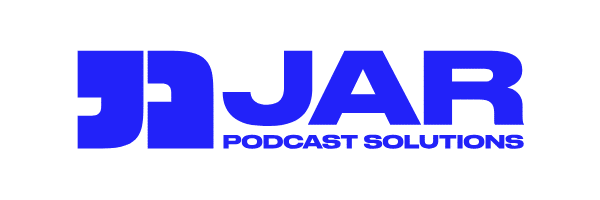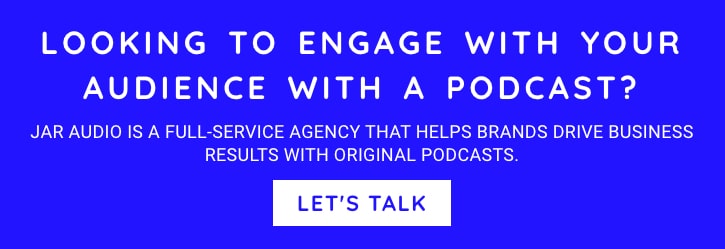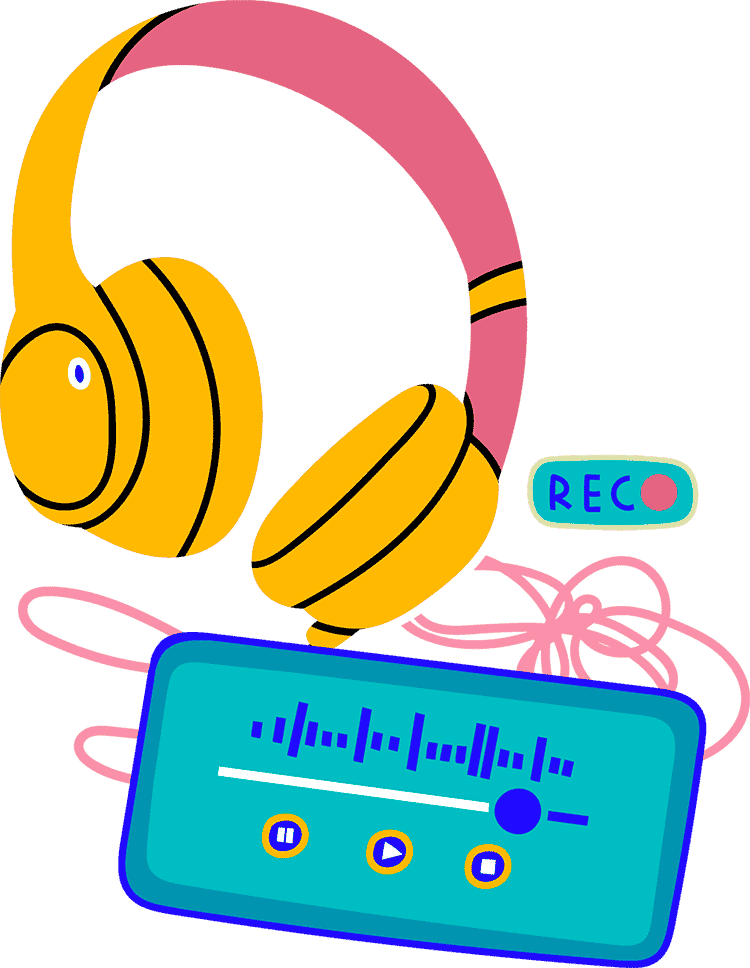Are you just adding video, or are you actually moving the needle?
Eighty seven percent of marketers say video delivers positive ROI, but most branded video podcasts are just expensive window dressing. Are you unlocking real business value, or just ticking a “we do video now” box? If you’re not treating your video podcast as a full-funnel distribution engine, you’re leaving reach, engagement, and conversions on the table. At JAR, we’ve spent years turning branded podcasts into strategic assets — and now we’re bringing that same, analytics-obsessed, story-first approach to video. Here’s how you turn your show from “nice to have” into a channel that actually delivers.
Why video podcasting is more than just a trend
Video podcasting: Strategic asset, not just a production fad
If you’re launching a video podcast because “everyone’s doing it,” you’re already behind. Video podcasting is a strategic imperative for brands that want to own the conversation across the entire funnel.
- Visual storytelling: Video lets you show, not just tell. On-screen presence, body language, and visual cues add a layer of authenticity and connection you can’t fake with audio alone.
- Learning styles: Some people want to listen, some want to watch, some want to read captions. Video podcasts cater to all of them.
- Discoverability: YouTube is the world’s second-largest search engine. If your podcast isn’t there, you’re invisible to a massive audience.
Example: Look at First Frame by TELUS STORYHIVE. It’s not just a podcast — it’s a launchpad for Canada’s next generation of creators. Focused on film and digital storytelling, it makes total sense that it’s a slick, well-produced video podcast. Through interviews, how-tos, and behind-the-scenes content, it gives emerging filmmakers and creators in BC and Alberta the tools, access, and inspiration to build real creative careers.
Multi-channel distribution: The key to podcast ROI
Build a distribution engine, not a silo
If your video podcast lives and dies on YouTube, you’re missing 80 percent of the value. Here’s how to atomize and weaponize your content across the funnel:
YouTube for discoverability
- SEO-driven titles & descriptions: Use YouTube’s autocomplete, TubeBuddy, and vidIQ to find high-intent, long-tail keywords. Front-load your main keyword in the title, keep it under 60 characters, and make the first two lines of your description count.
- Thumbnails & tags: Bold, high-contrast thumbnails and smart tags boost click-through and search ranking.
- Analytics: Track watch time, retention, and click-throughs on links (with UTM parameters).
LinkedIn for executive positioning
- Thought leadership clips: Chop up episodes into 1-2 minute insights. Pair with a punchy headline and a CTA to the full episode or a gated resource.
- Native video uploads: Don’t just share YouTube links — upload directly for better reach.
- Lead gen forms: Use LinkedIn’s built-in forms to capture interest right in the feed.
Snackable content for social engagement
- TikTok & Instagram reels: Ruthlessly edit down to 15-30 seconds. Start with a hook, add bold captions, and end with a CTA (“Agree or disagree?”).
- Batch production: Pull 5-10 highlights per episode and schedule them out. Consistency beats one-off “viral” attempts.
- Brand consistency: Use the same color palette, logo, and font across all clips.
Sales enablement & internal training
- Onboarding playlists: Use video podcast segments to train new hires or arm sales teams with customer stories and product demos.
- Gated content: Offer exclusive “deep dive” episodes for prospects who fill out a form.
Full-funnel alignment
- Awareness: Panel discussions, hot takes, and mini-docs to get on the radar.
- Consideration: Case studies, SME interviews, and explainer videos to build trust.
- Conversion: Live Q&As, testimonials, and product demos to drive action.
- Loyalty: Behind-the-scenes, community spotlights, and VIP content to turn customers into superfans.
Is video right for you? Scenarios for success and failure
Don’t waste your budget on the wrong format
When video podcasting makes sense:
- You have strong visual stories to tell (think: product demos, in-person interviews, or dynamic roundtables).
- Your target audience is active on video platforms.
- You have the budget for proper post-production and multi-channel distribution.
When it’s a waste of money:
- Your audience is audio-first (commuters, runners, etc.).
- Your content is just talking heads with no visual layer.
- You’re scraping by on a shoestring budget and can’t afford to do video well.
Example: If you’re a SaaS company with a technical, audio-first audience and no visual assets, stick to audio. Don’t burn cash on video just to “keep up.”
Building a sustainable video podcast strategy
Don’t treat this like a one-off project
A video podcast isn’t a campaign — it’s a system. Here’s how to make it sustainable:
- Align content with marketing goals: Want leads? Build episodes around pain points and end with a gated offer. Want retention? Create private feeds for customers with advanced tips.
- Consistent branding: Every clip, every platform, every episode—same look, same feel, same voice.
- Dedicated team: You need a producer, editor, social strategist, and analytics lead. Don’t try to DIY this with your intern and a ring light.
Case study: JAR worked with a global brand to build a video podcast system that aligned with quarterly marketing goals, used consistent branding, and had a dedicated team for production and distribution. The result? A show that didn’t just launch — it is growing, evolving, and delivering measurable business outcomes quarter after quarter.
Tracking the metrics that matter
Made to measure
Channel-specific metrics:
- YouTube: Watch time, retention, CTR, subscribers, traffic sources, lead gen clicks.
- LinkedIn: Views, completion rate, engagement, click-throughs, lead form submissions.
- TikTok/Reels: Views, watch duration, shares, profile clicks, follower growth.
- Website: Unique visitors, session duration, conversion rate, attribution via UTMs.
- Podcast apps: Downloads, retention, follows.
Lead gen tactics:
- Gated content downloads, newsletter signups, demo requests, direct inquiries — track all with UTMs and custom landing pages.
Tools:
- YouTube Studio, Google Analytics 4, LinkedIn Analytics, TikTok/Instagram Insights, CoHost, HubSpot, Salesforce, Hotjar.
How to use the data:
- Compare channels—double down on what works, kill what doesn’t.
- Optimize content—fix drop-off points, test new formats.
- Tie everything back to ROI — if TikTok brings views but no leads, reallocate.
Conclusion: Stop making noise. Start building a full-funnel engine.
Video podcasting is only valuable if it’s strategic, multi-channel, and measured. If you’re just “adding video,” you’re wasting time and money. But if you use it to unlock reach and engagement, recycle content, and deliver real value at every stage of the funnel, you’re building a brand asset that pays off for years.
Ready to turn your video podcast into a full-funnel engine? Contact JAR today and let’s build something that actually moves the needle.
Think your current show is doing all this? Prove it. Or let us show you how.

Jen Moss is the Co-Founder and and Chief Creative Officer of JAR Audio. As JAR’s podcast “doula”, collaborating with enterprise brands to bring great podcasts into the world. With a background spanning CBC Radio, Canada’s National Film Board Digital Studio, Vancouver’s Roundhouse Radio and the University of British Columbia, she guides the creation of captivating podcasts at JAR.



